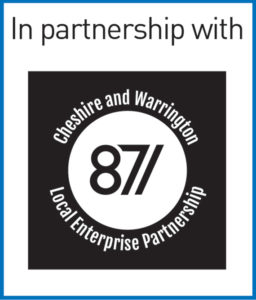 It still smarts a little for John Adlen, director of Cheshire Science Corridor Enterprise Zone, that Synchrotron left Daresbury, near Warrington, for Oxford 20-odd years ago. In context, it was one R&D facility in an area that already had a number of successful science and engineering clusters – but it smarts because those championing the area’s science credentials feel it is unfairly overshadowed by Oxford and Cambridge.
It still smarts a little for John Adlen, director of Cheshire Science Corridor Enterprise Zone, that Synchrotron left Daresbury, near Warrington, for Oxford 20-odd years ago. In context, it was one R&D facility in an area that already had a number of successful science and engineering clusters – but it smarts because those championing the area’s science credentials feel it is unfairly overshadowed by Oxford and Cambridge.
“When people are talking about Oxford and Cambridge, we want them to talk about Cheshire in the same breath,” said Adlen, speaking at an Estates Gazette roundtable event.
More recently, AstraZeneca announced it would be moving its R&D function from Alderley Edge to Cambridge – although its manufacturing function at Hurdsfield remains. Adlen said this presents an opportunity to redevelop the site into a life sciences hub for multiple occupiers: “In the long run, not over-relying on a single large employer but having a vibrant community of hi-tech SMEs will make Cheshire’s economy more resilient.”
Setting up the EZ, which stretches from the Wirral to Alderley Edge, south of Manchester, is part of the charge to put Cheshire more firmly on the UK’s science map. Its sector expertise is already established in life sciences, energy and nuclear engineering, chemical engineering and astronomy – among others – but there is ample development opportunity to grow these. The zone has 100 acres of developable land with ambitions for 500 new businesses and 20,000 jobs.
Key to building on those existing clusters is providing the right amenities to attract not only businesses but also staff – although the county is already a net importer of workers. “I think we realise that you are up against the big cities, in terms of natural agglomeration that cities have, and I think particularly in terms of young talent and concentration of graduate talent in those cities,” said Adlen.
However, costs and existing talent might just be the edge the area needs. Steve Park, managing director of urban regeneration partnership Warrington & Co, says that the corridor can feed off the cities. “The cost of starting up is phenomenally higher in the city centre and that’s where I think the power of this science corridor can come into its own. It’s that combination of skills and space.”
Naturally the zone will draw off the expertise of the area’s universities. Thornton Science Park, within the EZ, is home to Chester University’s new Faculty of Science and Engineering. Paul Vernon, executive director of commercial operations at the university, has experience in spin-out companies and says: “It’s much easier for us to get innovation and research out into ready-made companies than it is to do spin-outs.”
The approach at Thornton is to have the future workforce being educated alongside the relevant businesses – which is why the park is restricted to energy companies.
“They are influencing the curriculum so we’re starting to teach the undergraduates what the industry is telling us they want,” Vernon says. “I think there has to be much more of that.”
More than well connected
“In just under 11 years, we will be 55 minutes out of London, 15 minutes out of Birmingham, 15 minutes out of Manchester. We will be the best-connected place in the country and that means we have got to be match-fit,” said Jackie Sadek, independent chair of the Northern Gateway Development Zone, which will have an HS2 hub station at Crewe.
 And being match-fit means not only having great connections but being somewhere people want to live and work. The ambition is big: 100,000 new homes and 120,000 jobs by 2040 in an area that suffers from historic under-
And being match-fit means not only having great connections but being somewhere people want to live and work. The ambition is big: 100,000 new homes and 120,000 jobs by 2040 in an area that suffers from historic under-
investment.
“This needs to be a leafy, environmentally nice place to live. We do not want any of the hostile urban environments that we have been guilty of creating in the past,” she said.
Two local enterprise partnerships and seven local authorities are involved in the zone, which straddles Staffordshire and Cheshire and includes Stafford, Stoke-on-Trent and Newcastle-under-Lyme, as well as Crewe. The aim is to align the local plans and ideally set up a one-stop shop for investors and developers so they can be matched with the opportunities.
Some sites will be sold off; others will be public-private joint ventures – but each will be judged on its merit. Phil Mayall, development director of Muse Developments, said: “The worst thing in the world would be to have a big sell-off because all that creates is a bun-fight of uncertainty and conflicting interests.”
Residential development will lead the way – but in order to meet the target of 100,000 homes, volume housebuilding is going to be essential. However, that is a challenge in itself. To help address this, discussions are under way with the HCA to build the UK’s first government-backed modular construction facility within the zone.
With the number of parties involved and the scale of ambition, there is always a danger that some sites might fall behind. Sadek said there had been an important acceptance that not everyone can go at the same pace: “That doesn’t mean to say that once we have got some quick wins under our belts we then won’t go and do some remedial work with some of the areas that aren’t coming forward quite so quickly.”
Northern Gateway Development Zone key sites
- Winsford Industrial Park 74 acres
- Ceramic Valley Enterprise Zone Six sites totalling 340 acres
- Basford West, Crewe Commercial Park 128 acres, planning for more than 1m sq ft of industrial/distribution space
- Keele University Science and Innovation Park 37.5 acres B1
- Meaford Business Park 84 acres
- Blythe Vale 116 acres B1
EZ development sites
- Alderley Park 1.1m sq ft of high-specification space
- Birchwood 49 acres and 200,000 sq ft office space
- Thornton Science Park 23 acres secure development land
- Ellesmere Port Portfolio of oven-ready sites totalling 121 acres











